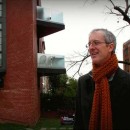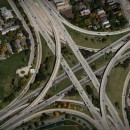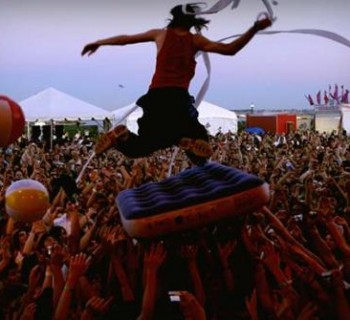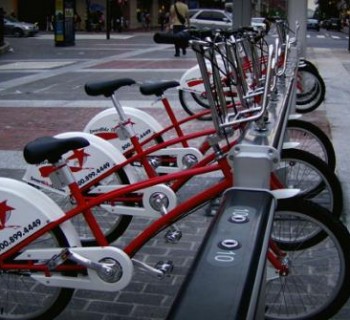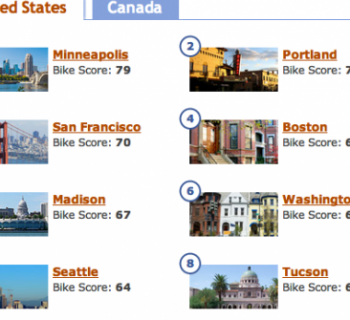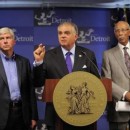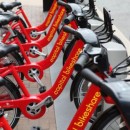Editor's Note: This article was originally published on Sustainable Cities Collective and is reposted with permission.
The suburban history of the last century in the United States can actually be said to be relatively short. It wasn’t until after the second World War that automobiles were more widely available and the suburbs became the standard for the “American Dream”. Since then, several developments have appeared which have worked to shape this dominant paradigm on how we live and work; Whereas once a great exodus left city centers abandoned from otherwise urban corporate headquarters, there is now a return of companies and people alike to these more walkable, livable downtowns.
Indeed, I would argue that there is a newfound desire towards this sense of diversity and multiculturalism that a city brings. As part of a generation that was criticized for potentially being stuck behind a smartphone, we still want to be face-to-face. More than ever before we want the European experience – an urban lifestyle filled with ground-floor shops, sidewalk cafes, public parks and plazas, compact living with excitement and variety – everything the most livable cities exemplify. As the trends stop being trends and begin showing serious signs of normalization, I can’t help but wonder if what we are beginning to experience now is a true paradigm shift. Much like the suburban dream of the 1950s and all it did for the landscape of the United States, I believe this is instead the real beginnings of a normalization of livable cities.
I currently live in Portland and by now I’m sure most people are at least familiar with the show Portlandia. Love it or hate it (most likely the latter if you’re a Portlander, it seems), you can at least recognize the types of people the show presents in this “weird” city. According to the stereotypes, there are groups of people who are very interested in urban farming and horticulture, pickling (everything), getting more information on the origins of food and eating healthier, riding bicycles as a form of transportation, and other quirky alternative lifestyle habits (tattoos, piercings, dyed hair, and so on). What I find interesting though, is not the poor timing of the show in relation to Portland’s hip-ness (a topic of debate by some people) but also it’s poor timing for the Portland-ness of these so-called weird behavior types. More and more it seems, you can find these types of people across the U.S. They are commonplace in major cities such as NYC, Chicago, and Philadelphia, but also in mid-sized cities rebuilding in the rust-belt like Pittsburgh and Detroit. Even in suburban cities like Missoula, MT and mid-sized cities like Indianapolis, where no one would have thought to ride a bicycle before, these alternative lifestyles are in demand. (I’ve even heard there are separated cycle tracks in Phoenix. Phoenix!)
More than ever before we want the European experience – an urban lifestyle filled with ground-floor shops, sidewalk cafes, public parks and plazas, compact living with excitement and variety – everything the most livable cities exemplify.
I know what you’re thinking. This could just be a generational thing, you say. It’s the economy, you cry. But I disagree. If we take a look at related data on the subject we can see these trends in quantitative form. An excellent example of this is the consistent decline in VMT, or vehicle miles travelled, and the decrease in young people buying cars and getting their licenses. It’s being shown that this is clearly not just a product of the recession – we are driving less and desiring to drive less. I’ll admit outright that I don’t have a driver’s license. While I learned to drive a car and planned to eventually get one (still late compared to most), I quickly realized that it makes more economic sense to not have to deal with ownership of a car. With a license, I may fall back on it as a crutch, and especially once I became more experienced in livable cities and what automobiles did to the urban landscape I decided that I simply don’t want to be a part of that. I may still be an outlier but I’m not the only one, and apparently I’m part of a quickly growing part of the population. For those living in cities – most of us by this point – it just makes more sense to choose an alternative mode of transportation to get around (be it by foot, bicycle, streetcar, bus, train, or skateboard – unicycles, even!). It’s more social. It’s more healthy. It’s less costly. Whatever your reason, quite frankly it’s just nicer. And more importantly, it’s becoming more normal.
Walkable and weird Portland, Oregon (Photo by Mike Davis)
And it’s not just my generation that sees this kind of shift. In cities everywhere the push in development is towards mid-sized, mixed-use, small-sized apartments downtown. We don’t want single-family houses and our “piece of land” per se. We thrive in small spaces, shared spaces, and social spaces – many of which are public spaces. Despite the fears of technologically-induced isolation, we’re moving back towards wanting places of face-to-face interaction in all aspects of our lives. You can find this normalization in books touting the trend and advertisements that cater to bike-friendly twenty-somethings. A new book was just highlighted on The Colbert Report titled “Homeward Bound” by Emily Matcher and details the rise in stereotypically homemaking activities like canning and knitting. The 2014 Ikea catalogue features a video with a Park(ing) Day set up as the normalization of insurgent public space. This concept of being able to impact your environment and enjoy the city with friends in this way is just one example of how this is manifesting itself in portrayals of the “average” person in the media.
And in this way we are shaping the way cities are designed.
My neighborhood in Portland is currently home to a large redevelopment site which will eventually be transformed into a dense, walkable area with a public square and park. Part of the incentive for the site’s owners, Con-way, is to create an area where their employees would also like to live and work – in a downtown area rather than a suburban office park. This in and of itself is also a trend based on the culture of those they would like to attract. And more importantly – this is not just a class of creative people anymore – this is, I believe, quickly becoming the dominant ideology of current and incoming generations. I can speak for myself and say that I would be eager to move to a neighborhood which hosted a public square with outdoor cafes and plenty of social engagement. I want buildings short enough that they provide residents the opportunity to recognize people passing by on the sidewalk below. And I would also want to work for a company that was close to my home, one which allows and even encourages spending time in these livable spaces and commuting in a non-traditional way. I would base my location decisions upon these extremely important quality of life components.
And I think this is what people are coming to expect now. We don’t want to be in a windowless office with a forty-five minute lunch, nine to five, Monday through Friday. We want the ability to take a break, play some ping-pong, have a meeting on the park outside or at a cafe. Arrive by bike? No problem. My office would have showers and a culture where coming in to work with panniers and a helmet isn’t taboo (or close enough that I wouldn’t even need to shower). And on Friday, I think I’ll work from home – or maybe my home is my office, for that matter. Portland already has this kind of stereotypical “alternative” culture, and in some ways this was encouraged by a top-down approach (the Urban Growth Boundary, for instance) but also this incredibly strong bottom-up, neighborhood and community focused population of “weird” people. I’m happy that Portland has this kind of reputation and livability, but I’m even happier to see it becoming less weird. Wherever you are, I think it is clear that more and more people are going to live in cities like Portland and they are going to want and deserve, these kinds of walkable, livable city centers. And while I can’t say for sure that this is a paradigm shift in its true form, I think we can all say that the trends are clear. Walkable cities are the future. Alternative transportation is the future. We are the future, and the future is livable.
This article was originally published on International Making Cities Livable.
Authored by: Katrina Johnston-Zimmerman
Katrina is an urban anthropologist exploring everyday life in Portland, Oregon. She has conducted numerous studies on public spaces and recently received her masters degree in urban studies with a focus in public space. While not in a perpetual ethnography of urban life, she is working on finding the perfect urban job and writes at THINK.urban.




